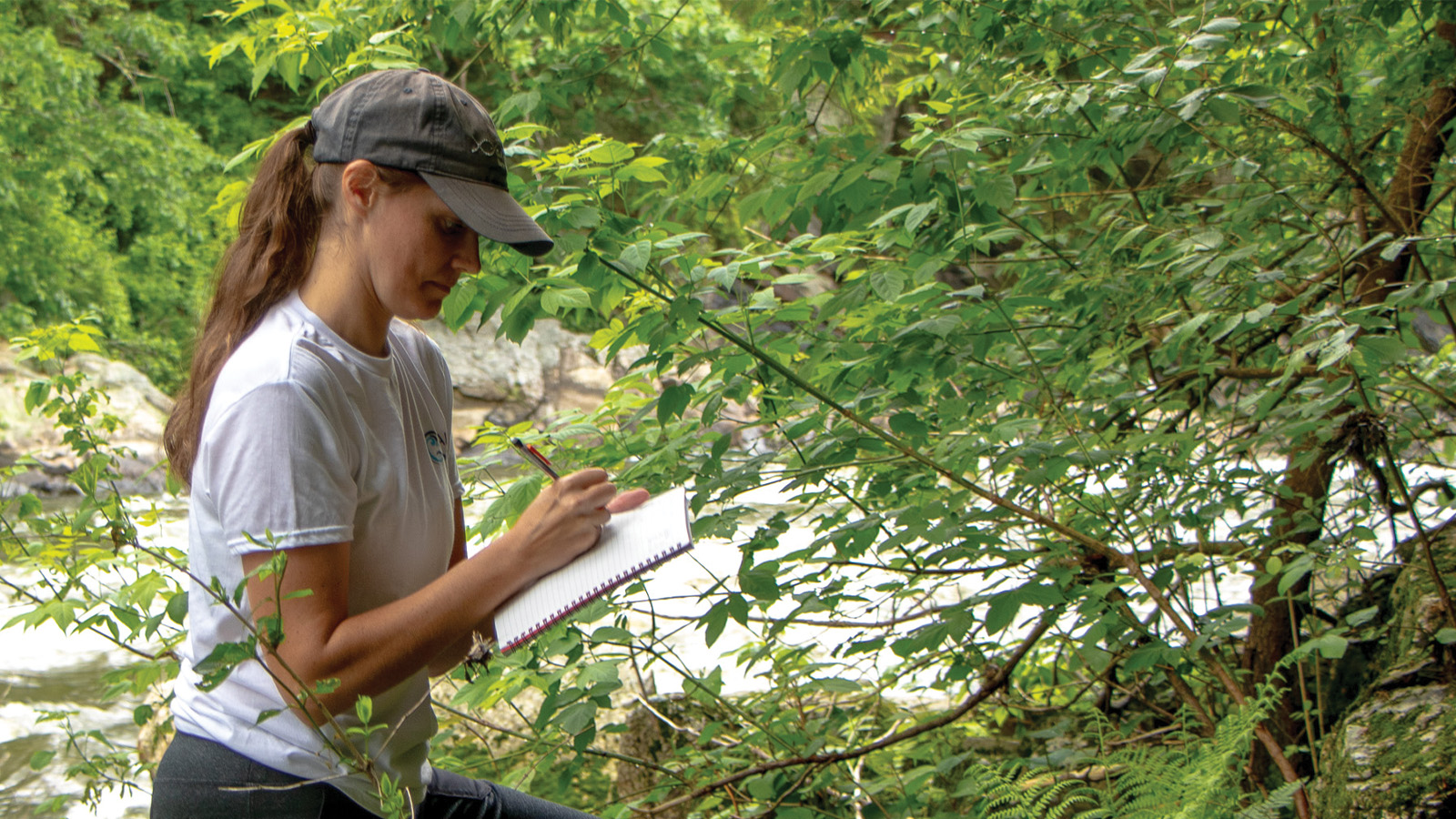
Understanding river herring migration and diet in Maine’s rivers
Over the past two centuries, river herring (alewife and blueback herring) experienced a decline in their populations due to the construction of dams blocking migration paths. However, the recent removal of dams and construction of fishways and other infrastructure has led to the start of their recovery. As part of the NSF EPSCoR RII Track-1 Maine-eDNA project, graduate student Samantha Bengs at the University of Southern Maine (USM) is working to better understand this recovery. Advised by Rachel Lasley-Rasher (USM associate professor of biology), Beng’s research focuses on the river herring’s phenology, habitat use, and zooplankton diet.
River herring have and continue to play an economically, ecologically and culturally important role in Maine. These fish are anadromous, meaning that they migrate from saltwater to freshwater to spawn. Through their annual migration, river herring help drive the exchange of nutrients between fresh and marine waters. By studying their migration patterns and their favored zooplankton species, researchers such as Bengs can predict the preferred migration regions of river herring through their eating habits.
As part of her research, Bengs works with Maine-eDNA’s partner the Gulf of Maine Research Institute (GMRI) and their Casco Bay Aquatic Systems Survey (CBASS) to assess juvenile fish populations from the Presumpscot River to the West Cod ledges in Cumberland County, using a variety of sampling methods. CBASS is a long-term ongoing aquatic surveying project that GMRI has conducted for over 10 years. Bengs collects environmental DNA (eDNA) samples to assess the presence of the river herring and zooplankton in the area and conducts gut content analysis of juvenile river herring to understand their preferred species of zooplankton. eDNA is the genetic material that is extracted from a water sample of a specific region in order to detect the presence of a species without handling or seeing the species itself. This sampling method allows Bengs to compare the location of river herring populations to concentrations of different species of zooplankton. Across Maine, researchers like Bengs are using eDNA methods to better understand the recovery of river herring but the approach is not without its limitations.
“It’s important to understand the limitations of any sampling method” explained Bengs. “With eDNA you can get a snapshot at some point in time which can work well for some situations, but if you are looking for a longer time series you would want to explore other options.” One solution that Bengs is experimenting with is 3D-printed metaprobes that can collect eDNA passively at various steps for hours at a time. These metaprobe devices are being tested by Bengs to see if they can increase the odds of detecting river herring eDNA signals so they can estimate in-and-out migration behavior more effectively. Bengs’ research with metaprobes can be used to improve eDNA testing efficiency for researchers across Maine.
Bengs’ research elucidates river herring’s migrations and diets which allows us to understand their recent recovery as a species and helps ensure the previous conditions that contributed to their initial decline are not repeated. By understanding where and when they migrate, communities can take steps to make the migration easier and help restore their local ecosystems.
